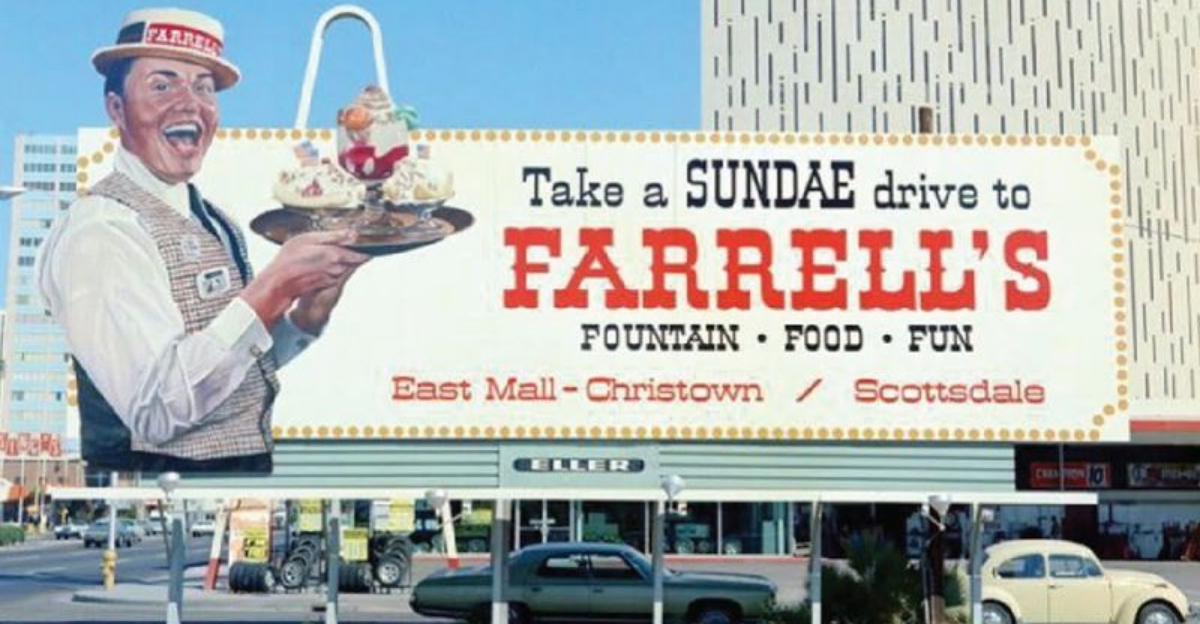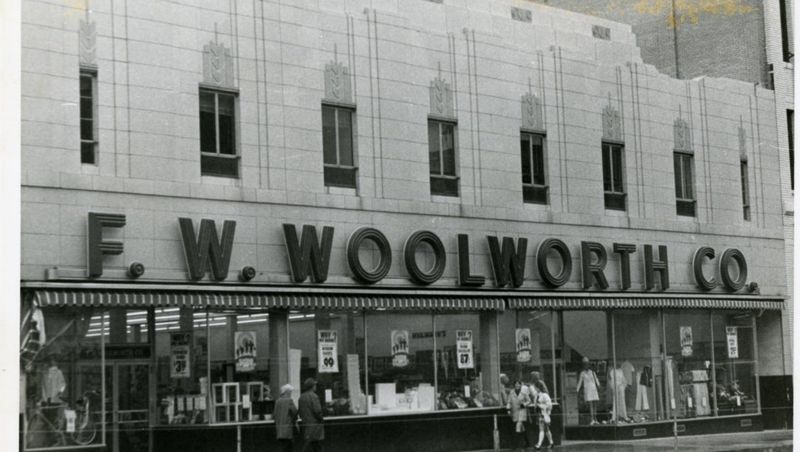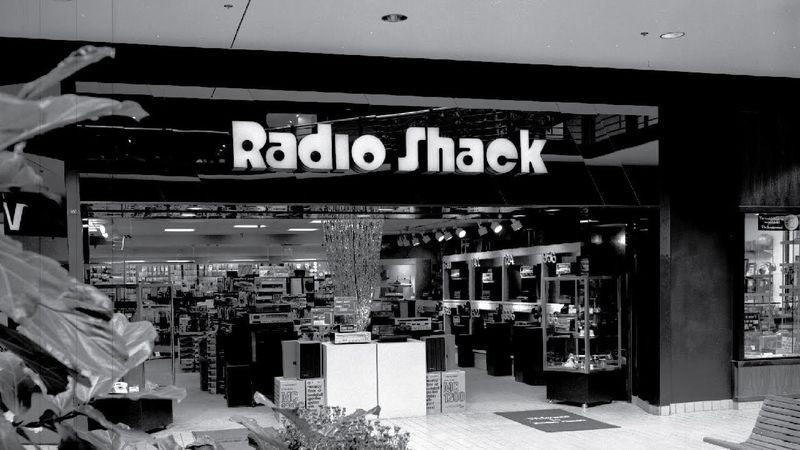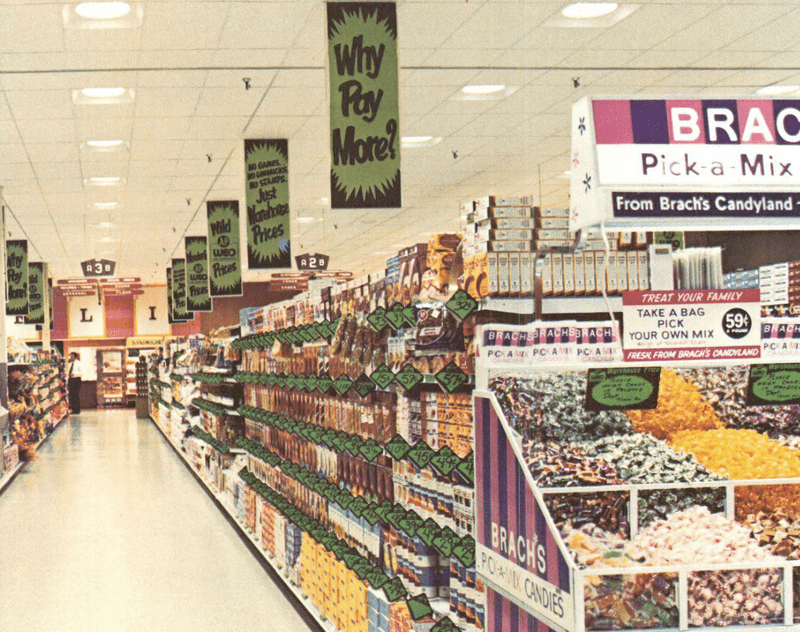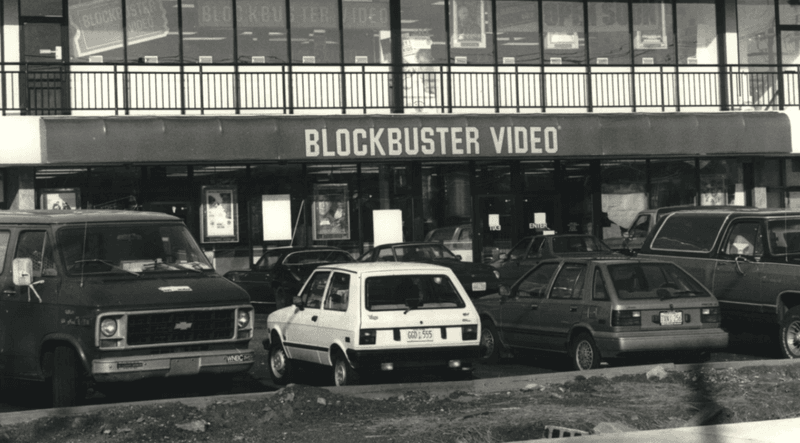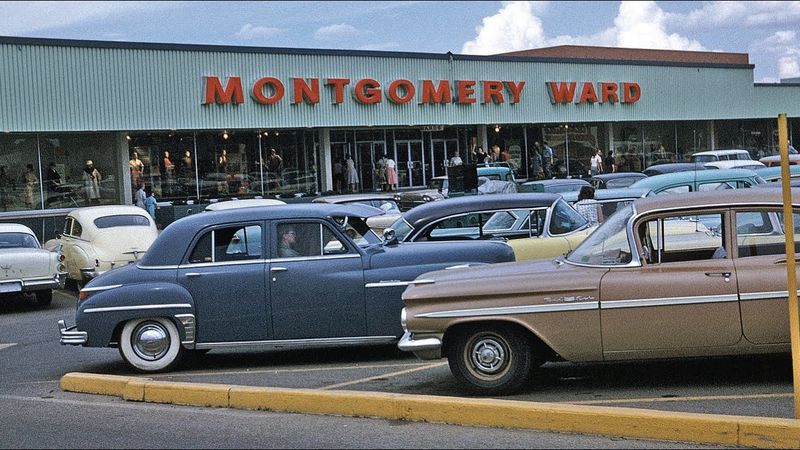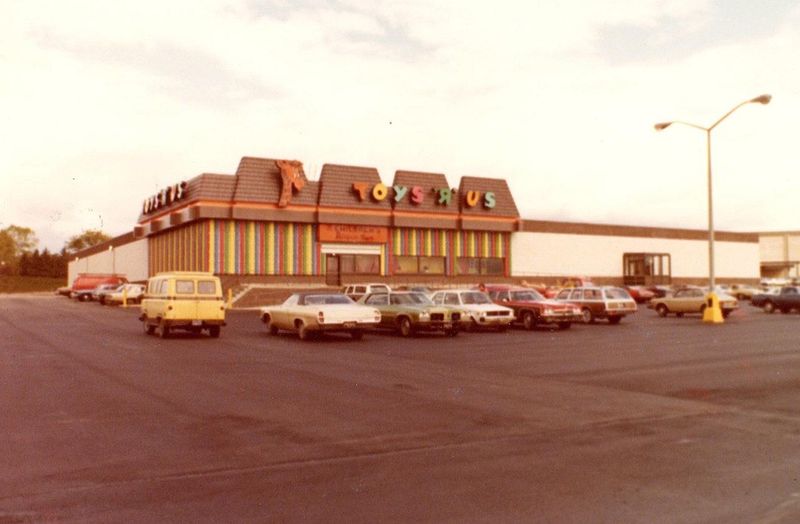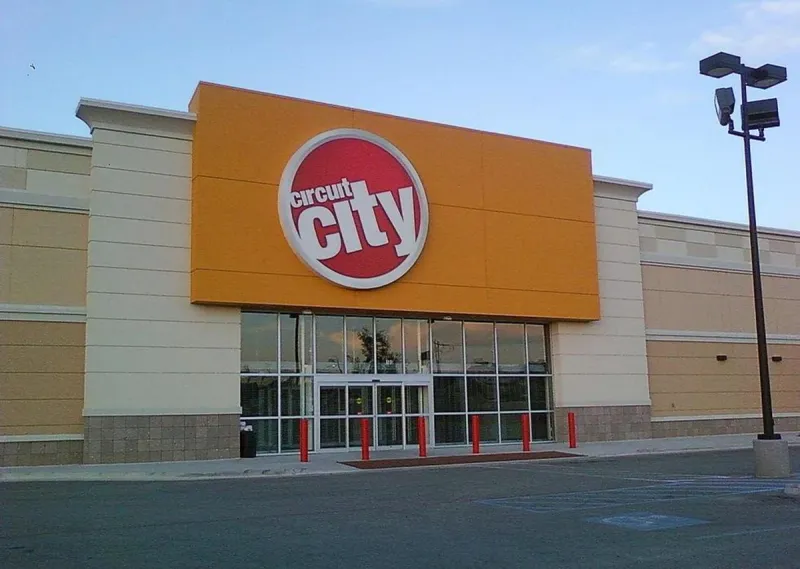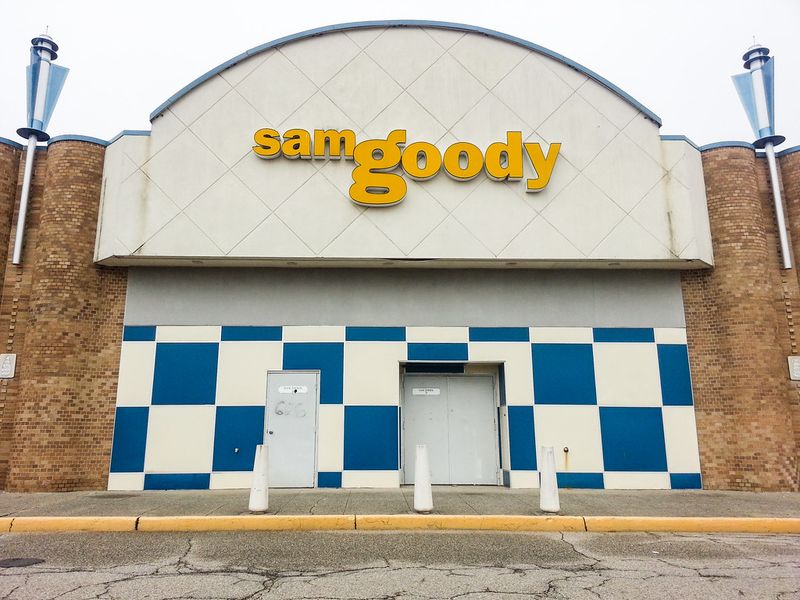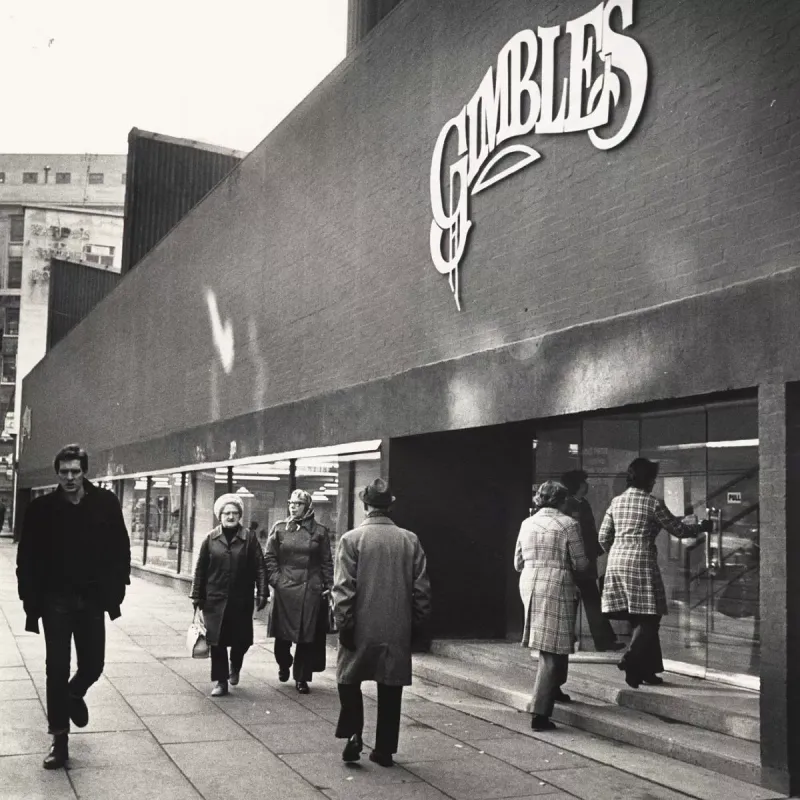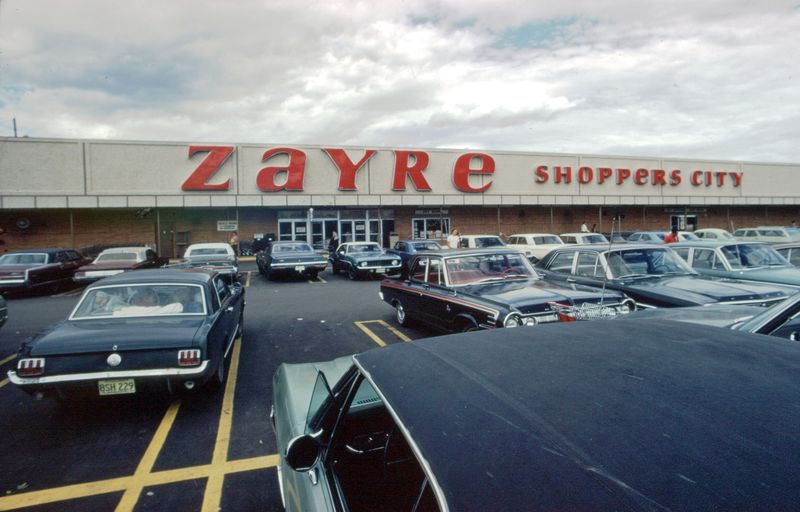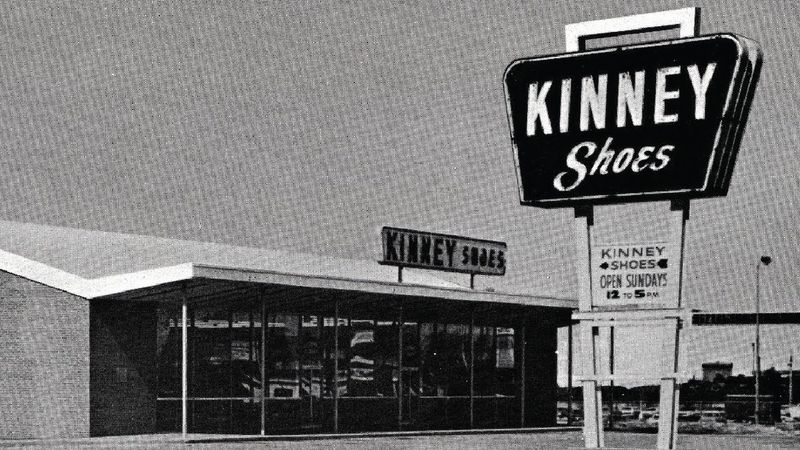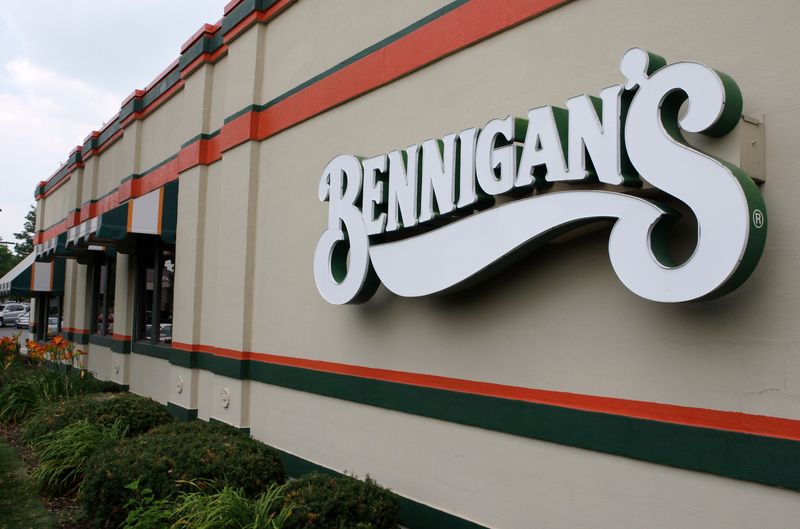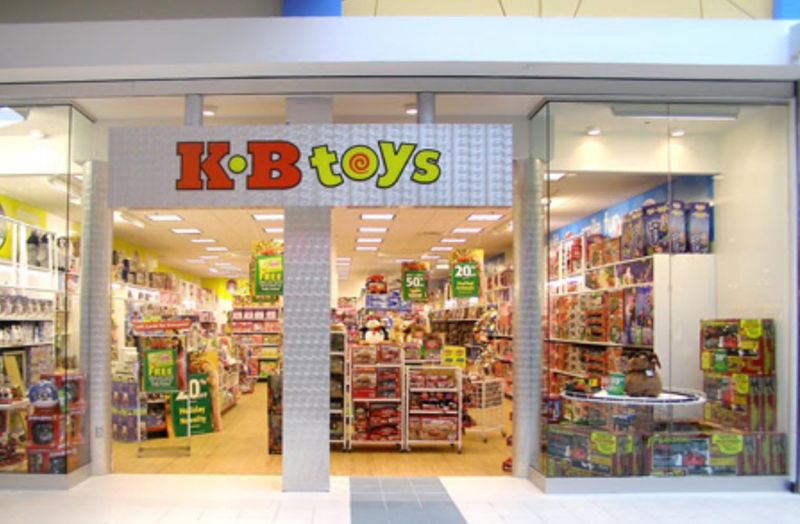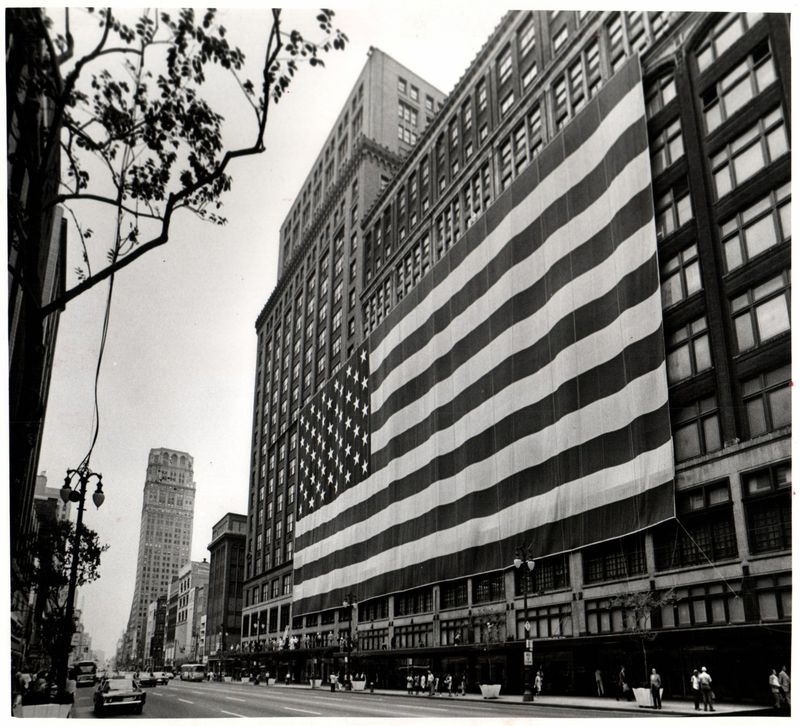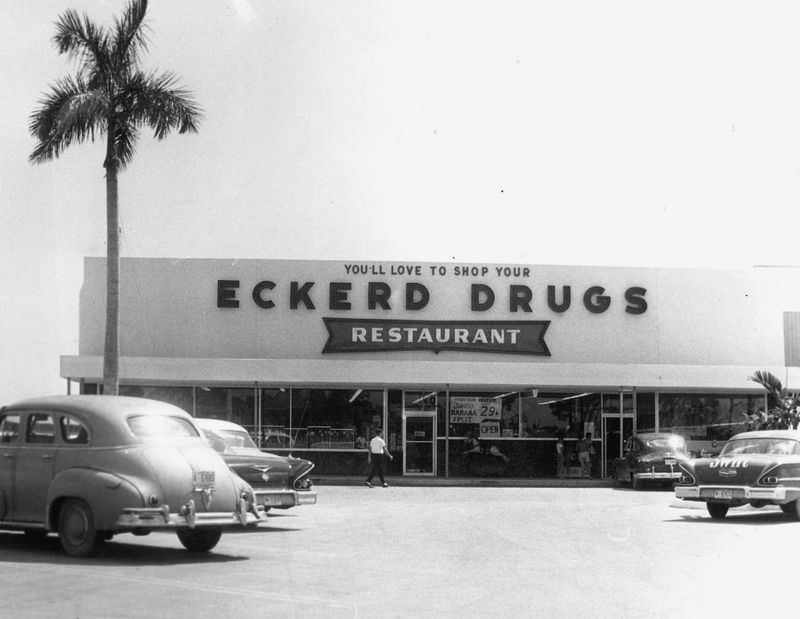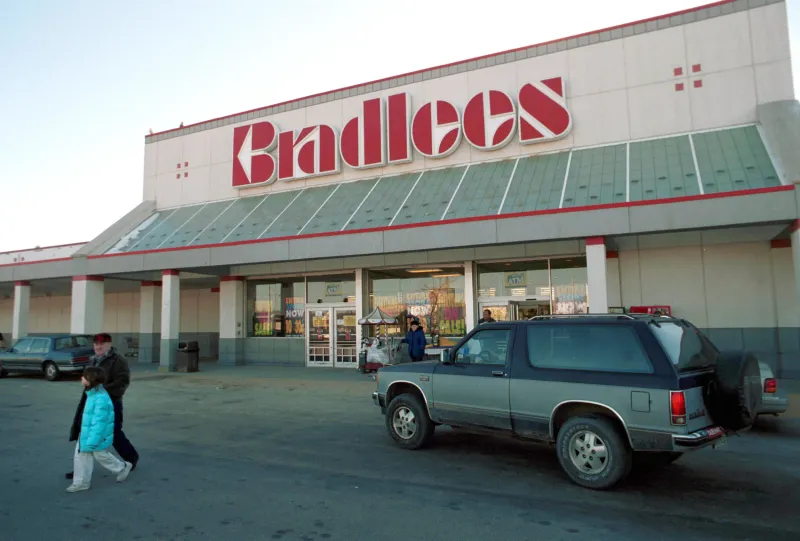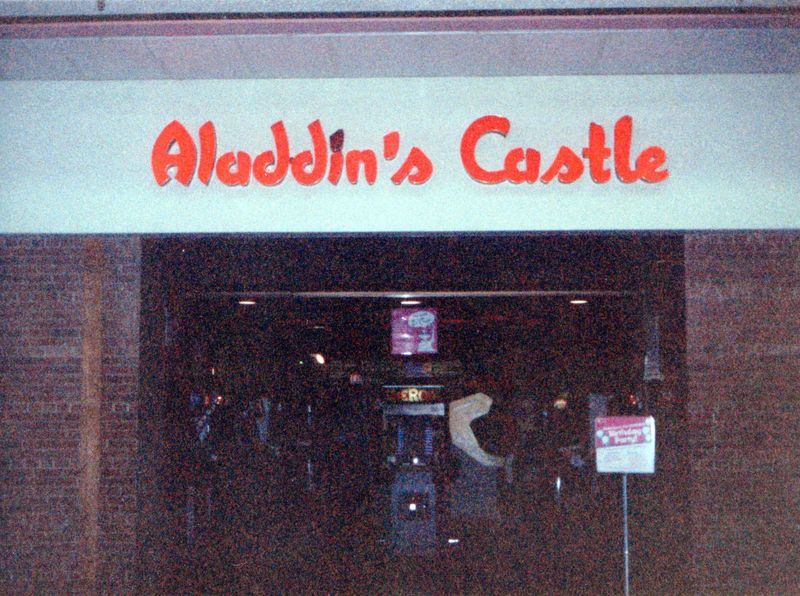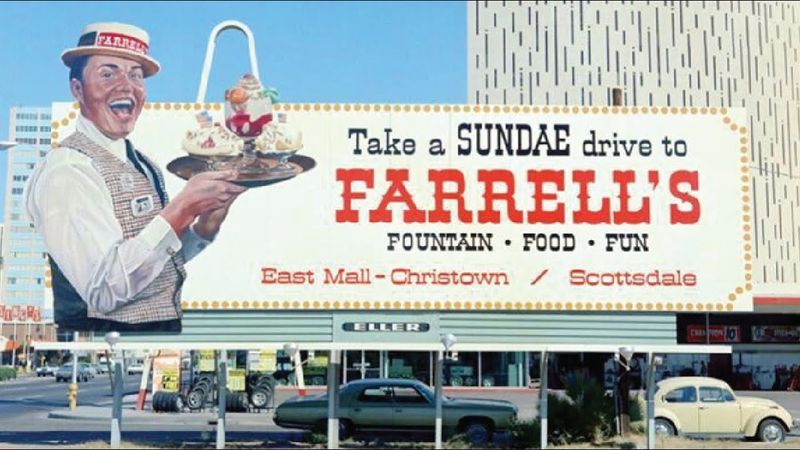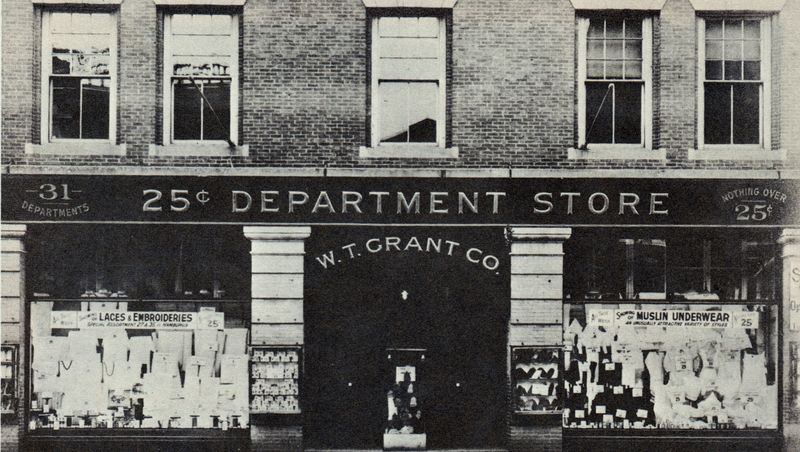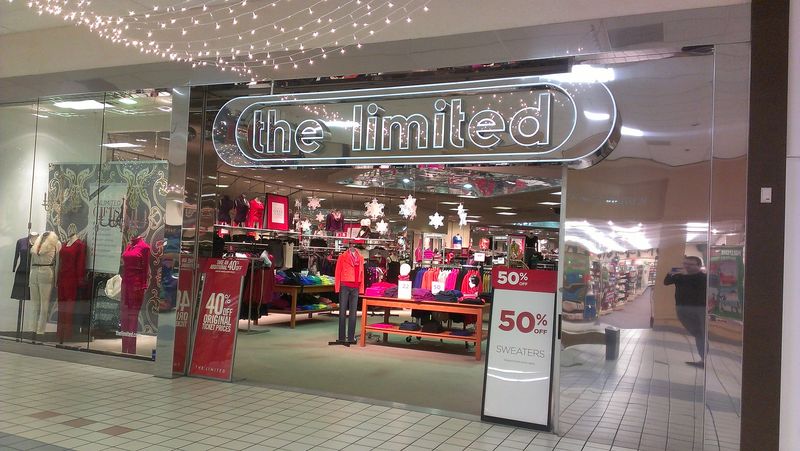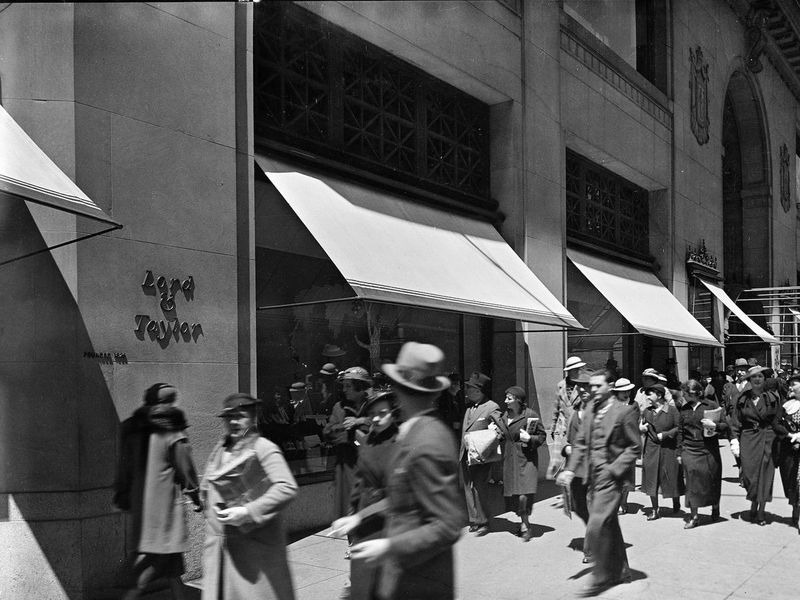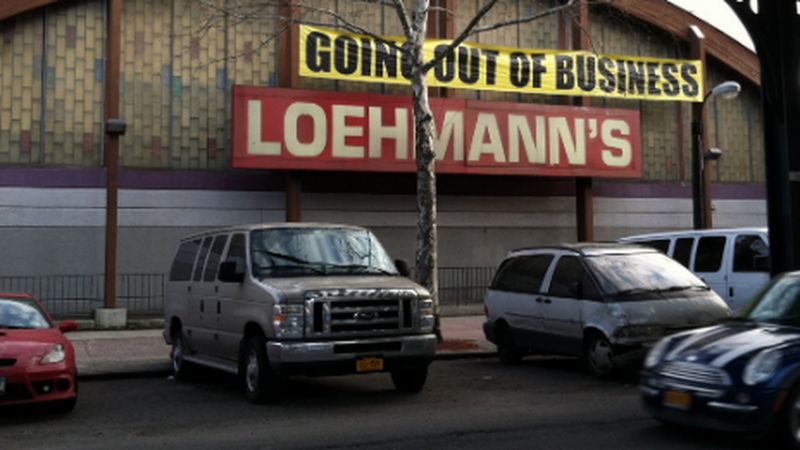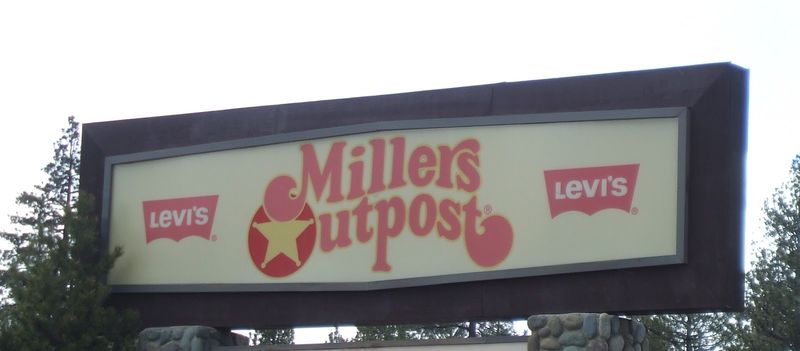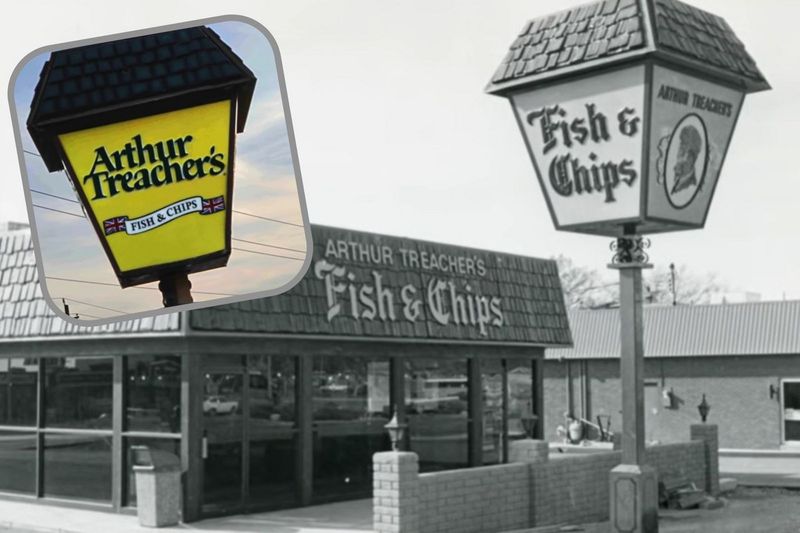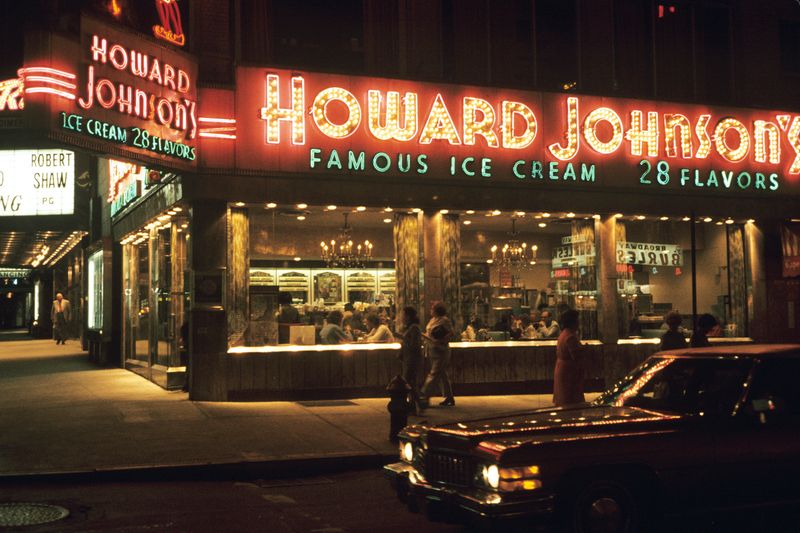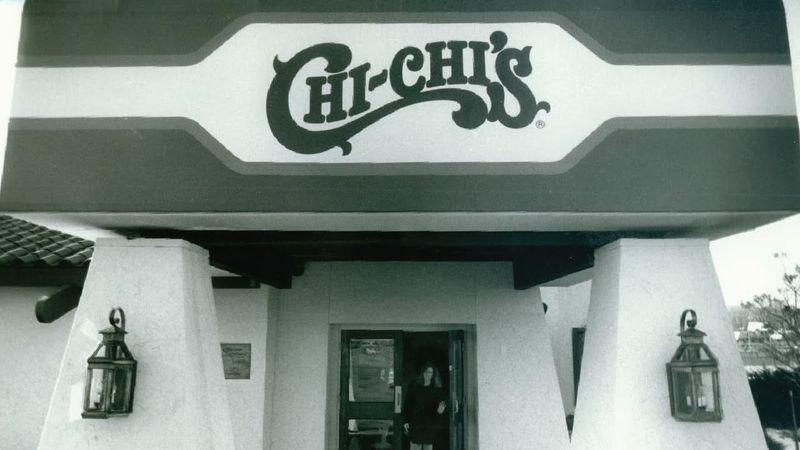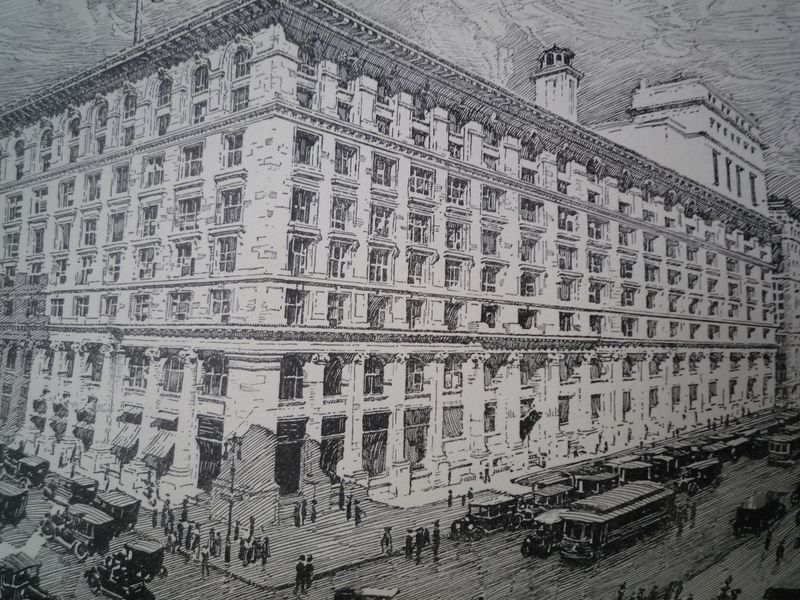The 1970s was a magical time for retail enthusiasts, with a plethora of chain stores that captured the spirit of the era. These stores, ranging from fashion boutiques to toy havens, were beloved by many but unfortunately didn’t stand the test of time.
In this blog post, we will explore 29 of these iconic stores that have since disappeared from the retail landscape, reminiscing about the unique charm they brought to shopping during that vibrant decade.
1. Woolworth’s
Woolworth’s was a go-to destination in the 70s, a variety store that felt like a treasure trove. Shoppers found everything from toys to clothing. The bustling aisles were filled with eager customers.
Woolworth’s lunch counters became iconic, serving simple yet beloved meals. It was more than just a store; it was a community hub. People gathered for both shopping and socializing.
The decline began in the late 20th century, as competition grew fierce. Despite efforts, the chain couldn’t keep up with modern retail trends, leading to its eventual closure.
2. RadioShack
RadioShack was synonymous with electronics and gadgets. During the 70s, it was a haven for tech enthusiasts. Customers explored shelves filled with radios, batteries, and more.
RadioShack offered a glimpse into the future of technology. It was the place to discover the latest innovations. The staff, passionate about electronics, provided expert advice.
However, as technology evolved, RadioShack struggled to maintain relevance. The digital age brought challenges it couldn’t overcome. Despite attempts to reinvent, the beloved store couldn’t survive the competitive market.
3. A&P Supermarket
A&P was a supermarket giant in the 70s, known for its wide variety of products. Families shopped there for groceries and essentials. The aisles were always bustling.
A&P’s red and white signage was a familiar sight in many neighborhoods. It played a crucial role in community life. Customers appreciated the convenience and selection.
However, as the retail landscape changed, A&P faced challenges. New competitors emerged, offering more choices. A&P couldn’t keep up, eventually leading to its decline and closure.
4. Blockbuster
Blockbuster was the go-to spot for movie rentals in the 70s. It offered a vast selection of films. Families spent hours browsing the aisles, selecting weekend entertainment.
The atmosphere was lively, with staff recommendations adding to the experience. Blockbuster brought the magic of cinema home. It was a cultural phenomenon.
However, the rise of digital streaming services posed a challenge. As technology advanced, Blockbuster couldn’t adapt quickly enough. The once-thriving chain eventually closed its doors, leaving a void for movie enthusiasts.
5. Montgomery Ward
Montgomery Ward was a staple in the 70s retail scene. It offered a diverse range of products, from clothing to home goods. Shoppers appreciated the convenience.
The catalog was particularly popular, delivering a world of products to customers’ doorsteps. It was revolutionary for its time. The store was known for quality and variety.
However, the rise of other retail giants and shifting consumer preferences challenged Montgomery Ward. The store struggled to modernize. Despite efforts to revamp, it eventually succumbed to market pressures, closing its doors.
6. Toys “R” Us
Toys “R” Us was a paradise for children in the 70s. The vibrant aisles were filled with every toy imaginable. Kids’ eyes lit up as they explored the store.
Geoffrey the Giraffe, the store’s mascot, was a beloved figure. Toys “R” Us was more than a store; it was an experience. Families visited for birthdays and holidays.
However, the rise of online shopping and changing interests took a toll. Despite its iconic status, Toys “R” Us couldn’t keep up with modern trends, leading to its closure.
7. Circuit City
Circuit City was a haven for electronics enthusiasts in the 70s. It offered a wide selection of the latest gadgets. Customers flocked to explore the options.
The store was known for its knowledgeable staff, always ready to assist. Circuit City became synonymous with quality electronics. It was a trusted name.
However, as technology evolved, Circuit City struggled to adapt. New competitors emerged, offering more competitive prices. The store couldn’t keep pace with the changing market, eventually leading to its closure.
8. Sam Goody
Sam Goody was a music lover’s paradise in the 70s. The store was filled with rows of vinyl records. Enthusiasts spent hours browsing the extensive collection.
The knowledgeable staff provided recommendations, enhancing the shopping experience. Sam Goody was a hub for discovering new music. It played a vital role in the music scene.
However, the rise of digital music and streaming services changed the industry. Sam Goody struggled to keep up with the digital age. Despite efforts to adapt, the beloved store eventually closed its doors.
9. Gimbels
Gimbels was a department store icon in the 70s. It offered a wide range of products, from fashion to home goods. Shoppers enjoyed the elegant displays.
The store was known for its holiday parades and festive atmosphere. Gimbels was a shopping destination for families. It held a special place in many hearts.
However, as retail trends shifted, Gimbels faced challenges. New competitors emerged, changing the landscape. The store couldn’t adapt quickly enough, eventually leading to its closure.
10. B. Dalton Bookseller
B. Dalton was a haven for book lovers in the 70s. The cozy store offered a diverse selection of books. Customers enjoyed the inviting atmosphere.
The staff, passionate about literature, provided personalized recommendations. B. Dalton became a beloved spot for discovering new reads. It fostered a love for books.
However, the rise of online retailers and e-books posed challenges. B. Dalton struggled to compete with digital convenience. Despite efforts to innovate, the store couldn’t survive in the evolving market, leading to its closure.
11. Zayre
Zayre was a discount department store that thrived in the 70s. It offered affordable fashion and household goods. Shoppers flocked to find deals.
The store’s colorful signage and vibrant displays attracted customers. Zayre was known for its budget-friendly prices. It was a popular shopping destination.
However, as competition grew, Zayre faced challenges. The rise of big-box retailers changed the landscape. Despite efforts to stay relevant, Zayre couldn’t keep pace, leading to its closure.
12. Kinney Shoes
Kinney Shoes was a go-to spot for footwear in the 70s. The store offered a wide range of stylish options. Shoppers enjoyed trying on the latest trends.
The knowledgeable staff provided personalized service, enhancing the experience. Kinney Shoes was synonymous with quality and fashion. It was a trusted name.
However, as consumer preferences shifted, Kinney Shoes faced challenges. New competitors emerged, offering more options. Despite efforts to adapt, the store couldn’t keep up, eventually leading to its closure.
13. Bennigan’s
Bennigan’s was a popular restaurant chain in the 70s. It offered a lively atmosphere and classic American fare. Customers enjoyed gathering for meals.
The vintage decor and friendly staff added to the charm. Bennigan’s became a favorite spot for socializing. It was more than just a dining destination.
However, as the restaurant industry evolved, Bennigan’s faced challenges. New dining trends emerged, changing preferences. Despite efforts to revamp the menu, Bennigan’s couldn’t survive the competitive market, leading to closures.
14. KB Toys
KB Toys was a beloved toy store in the 70s. The vibrant atmosphere attracted children and families. Every visit was an adventure.
The store offered a wide variety of toys, from dolls to action figures. Kids’ imaginations ran wild as they explored. KB Toys was a magical place.
However, the rise of online shopping and larger retailers posed challenges. KB Toys struggled to compete with the changing landscape. Despite efforts to adapt, the store couldn’t survive, leading to its closure.
15. Hudson’s
Hudson’s was a department store staple in the 70s. It offered a wide range of products, from fashion to home goods. Shoppers appreciated the elegance.
The store was known for its iconic building and high-quality offerings. Hudson’s was more than just a shopping destination. It was a cultural landmark.
However, as consumer preferences shifted, Hudson’s faced challenges. New competitors emerged, changing the retail landscape. Despite efforts to modernize, the store couldn’t keep up, eventually leading to its closure.
16. Eckerd Pharmacy
Eckerd Pharmacy was a trusted name in the 70s. It offered a wide range of health essentials and pharmaceuticals. Customers relied on its services.
The knowledgeable staff provided personalized care. Eckerd was more than just a pharmacy; it was a community resource. It became a household name.
However, as the pharmacy industry evolved, Eckerd faced challenges. The rise of large chains changed the landscape. Despite efforts to innovate, Eckerd couldn’t survive the competitive market, leading to its closure.
17. Service Merchandise
Service Merchandise was a unique retail store in the 70s. It operated as a catalog showroom. Customers browsed displays and ordered items for pickup.
The store offered a wide range of products, from jewelry to electronics. It was a novel shopping experience. Service Merchandise became a popular destination.
However, as retail trends evolved, the store faced challenges. New competitors and shopping models emerged. Despite efforts to adapt, Service Merchandise couldn’t keep up, eventually leading to its closure.
18. Bradlee’s
Bradlee’s was a popular department store in the 70s. It offered a wide range of products at affordable prices. Shoppers enjoyed finding deals.
The store’s retro signage and vibrant atmosphere attracted customers. Bradlee’s became a go-to spot for families. It was a shopping staple.
However, as competition grew, Bradlee’s faced challenges. The rise of discount retailers changed the landscape. Despite efforts to stay relevant, Bradlee’s couldn’t survive, leading to its closure.
19. Aladdin’s Castle
Aladdin’s Castle was a beloved arcade chain in the 70s. It offered a wide range of classic games. Gamers spent hours enjoying the lively atmosphere.
The retro decor and exciting games created a unique experience. Aladdin’s Castle was a hub for fun and entertainment. It was a cultural phenomenon.
However, the rise of home gaming systems posed challenges. Aladdin’s Castle struggled to compete with new entertainment options. Despite efforts to innovate, the arcade couldn’t survive, leading to its closure.
20. Farrell’s Ice Cream Parlour
Farrell’s Ice Cream Parlour was a whimsical attraction for families, known for its gigantic sundaes and festive birthday celebrations. The parlour’s lively environment, complete with costumed servers and a player piano, made every visit memorable.
Founded in 1963, Farrell’s reached its peak popularity in the 70s, becoming synonymous with joyful, ice cream-filled gatherings. However, changes in consumer preferences and financial struggles led to its decline.
Despite its closure, Farrell’s remains a cherished memory, representing nostalgia and the joy of simple pleasures. Its unique concept continues to inspire modern ice cream parlours.
21. W.T. Grant
W.T. Grant was a popular chain store in the 70s. It offered a wide range of products, from clothing to home goods. Customers appreciated the variety.
The store’s retro decor and classic displays added to the charm. W.T. Grant became a trusted name in retail. It was a household staple.
However, as the retail landscape changed, W.T. Grant faced challenges. New competitors emerged, altering the market dynamics. Despite efforts to adapt, the store couldn’t survive, leading to its closure.
22. The Limited
The Limited was a fashion-forward clothing store in the 70s. It offered trendy apparel for young women. Shoppers enjoyed the chic displays.
The store’s stylish mannequins and curated collections attracted fashion enthusiasts. The Limited became a go-to spot for the latest trends. It was a retail leader.
However, as consumer tastes evolved, The Limited faced challenges. New fashion retailers emerged, offering diverse options. Despite efforts to innovate, the store couldn’t keep up, eventually leading to its closure.
23. Lord & Taylor
Lord & Taylor was a high-end department store in the 70s. It offered luxury fashion and home goods. Shoppers appreciated the elegant atmosphere.
The store’s prestigious reputation and quality offerings attracted discerning customers. Lord & Taylor became a symbol of sophistication. It was a retail icon.
However, as market dynamics shifted, Lord & Taylor faced challenges. New competitors and changing consumer preferences altered the landscape. Despite efforts to adapt, the store couldn’t survive, leading to its closure.
24. Loehmann’s
Loehmann’s was a designer discount retailer in the 70s. It offered high-end fashion at reduced prices. Shoppers loved finding deals on designer labels.
The store’s lively atmosphere and unique offerings attracted bargain hunters. Loehmann’s became a favorite destination for fashion enthusiasts. It was a retail gem.
However, as retail competition increased, Loehmann’s faced challenges. New discount retailers emerged, changing the market. Despite efforts to innovate, the store couldn’t keep up, eventually leading to its closure.
25. Miller’s Outpost
Miller’s Outpost was a casual clothing store in the 70s. It offered a wide selection of denim and casual wear. Customers appreciated the relaxed vibe.
The store’s laid-back atmosphere and trendy offerings attracted young shoppers. Miller’s Outpost became synonymous with casual fashion. It was a cultural staple.
However, as fashion trends evolved, Miller’s Outpost faced challenges. New retailers emerged, offering diverse styles. Despite efforts to adapt, the store couldn’t survive, leading to its closure.
26. Arthur Treacher’s
Arthur Treacher’s was a popular fish and chips chain in the 70s. It offered a nostalgic dining experience. Customers enjoyed the classic menu.
The vintage decor and friendly atmosphere added to the charm. Arthur Treacher’s became a favorite spot for family meals. It was a dining staple.
However, as the restaurant industry evolved, Arthur Treacher’s faced challenges. New dining trends and competitors emerged. Despite efforts to modernize, the chain couldn’t keep up, leading to closures.
27. Howard Johnson’s
Howard Johnson’s was a beloved restaurant chain in the 70s. It offered a wide range of menu options. Families enjoyed gathering for meals.
The iconic orange roofs and vintage signage made it a recognizable brand. Howard Johnson’s became a cultural landmark. It was more than just a restaurant.
However, as the dining landscape changed, Howard Johnson’s faced challenges. New competitors and changing preferences emerged. Despite efforts to innovate, the chain couldn’t survive, leading to its decline.
28. Chi-Chi’s
Chi-Chi’s was a vibrant Mexican restaurant chain in the 70s. It offered a lively atmosphere and authentic dishes. Customers enjoyed the festive vibe.
The colorful decor and friendly staff added to the experience. Chi-Chi’s became a go-to spot for Mexican cuisine. It was a dining sensation.
However, as the restaurant industry evolved, Chi-Chi’s faced challenges. New dining options and trends emerged. Despite efforts to adapt, the chain couldn’t keep up, leading to its closure.
29. B. Altman and Company
B. Altman and Company was a prestigious department store in the 70s. It offered luxury fashion and home goods. Shoppers appreciated the elegant environment.
The store’s classic architecture and quality offerings attracted discerning customers. B. Altman became a symbol of sophistication. It was a retail icon.
However, as market dynamics shifted, B. Altman faced challenges. New competitors and changing consumer preferences altered the landscape. Despite efforts to adapt, the store couldn’t survive, leading to its closure.
